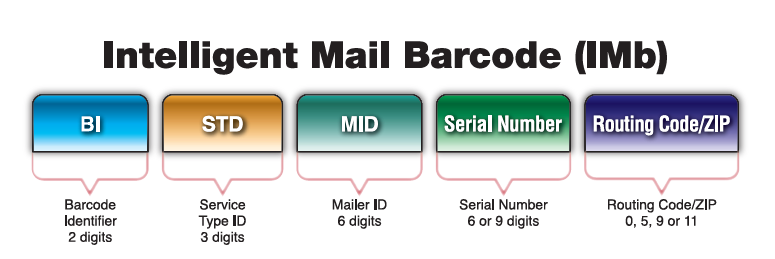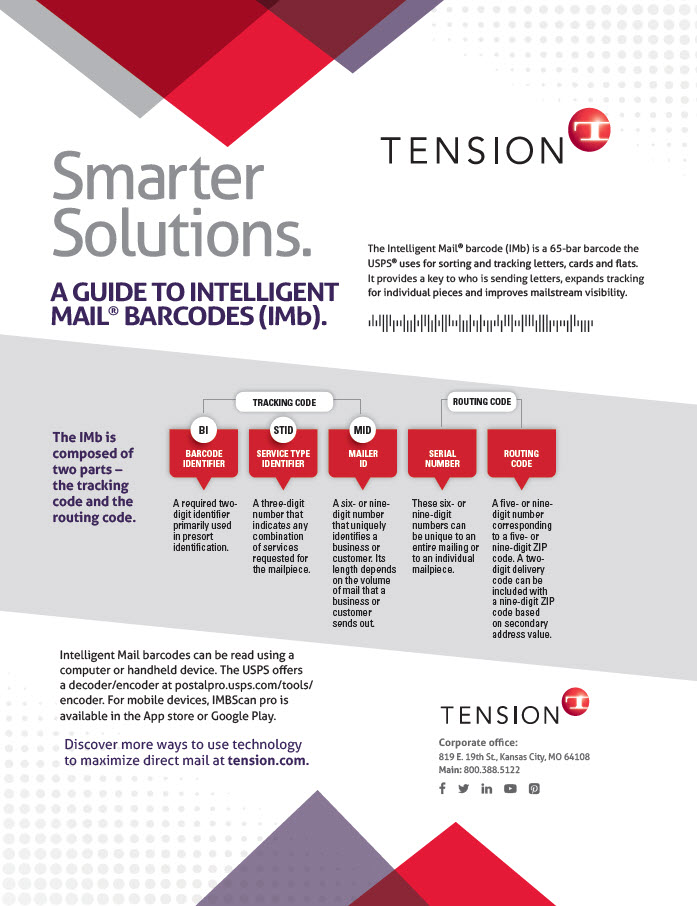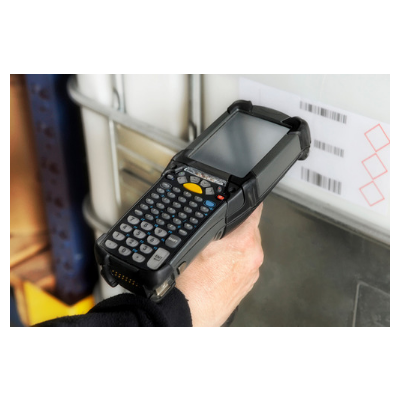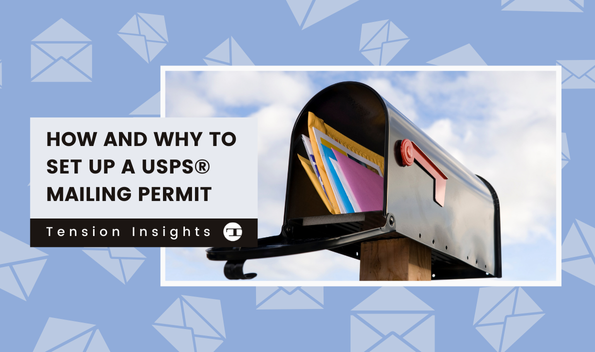The Intelligent Mail Barcode or IMb provides a key to who is sending a letter and where it is going. It has between 20 and 31 digits, which are converted to barcode. Learn more about Intelligent Mail Barcodes in two of Tension’s blogs here and here.

How to Read an Intelligent Mail Barcode IMb
The IMb is broken into two parts — the tracking code and the routing code. The tracking code tells us the identification of the mailer plus unique mailpiece information and the routing code consists of the Delivery Point Zip code.
The IMb Tracking Code
The tracking code tells us about the mailer and the mailpiece.
-
Barcode Identifier (BI): The BI is a required, specific two-digit identifier assigned by the Postal Service™ and is used primarily to encode the presort identification.
-
Service Type Identifier (STID): The three-digit STID is assigned by the Postal Service and indicates any combination of services that have been requested for the mailpiece. These services include defining the mailpiece as full service, basic or non-automation. It also is used to determine what the mailer wants the USPS® to do with mail that is found to be “undeliverable as addressed” (UAA), as well as the form of address correction that a mailer desires, if any. The USPS provides an STID chart here.
-
Mailer ID (MID): The MID is assigned by the Postal Service and is a six or nine-digit number that uniquely identifies a business or customer. Its length depends on the volume of mail a business/customer sends out.
-
Serial Number: These six or nine-digit numbers are either mailer or postal produced. Serial numbers can be unique to a user’s entire mailing or unique to the individual mailpiece. Every IMb, other than those with an Origin IMb Tracing barcode, must include a serial number. The serial number can also be referred to as a Sequence Number.
The IMb Routing Code
The routing code includes carrier route and delivery information. It is zero, five, nine or eleven digits depending upon the amount of information included by the mailer.
-
No information: zero digits.
-
When the five or nine-digit ZIP code is known or included in the IMb, the routing code is five or nine digits.
-
A two-digit delivery point code can be included along with the nine-digit ZIP code when appropriate, bringing the digits in the routing code to 11 (digits, that is). A delivery point code is based on what’s called the “secondary address value” or, more simply, an apartment or suite number.
Intelligent Mail Barcode Decoder
There’s an App for That
There are three ways to use the IMb: non-automation, basic automation and Full-Service mailings. No matter which method you choose, it’s critical to test or read your barcode for accuracy.
The IMb is based on a computer algorithm. Once it has been converted into a barcode, it can only be read using a computer or handheld device.
-
The USPS has a decoder/encoder online at https://postalpro.usps.com/tools/encoder. To use this tool, you need to enter the letter designation for each bar (F, D, A or T). Then, it decodes the IMb based on the letters input. Because this method relies on manual input, it’s important to check for correctness when inputting the letter designations.
-
Did you know there are apps that can read the IMb? IMBScan pro is available for purchase on the App store or Google Play.
Our customers often ask us to help test their barcodes for accuracy by sending us their IMb artwork. We use handheld scanners that can verify the information held on the IMb, and check to ensure it is a viable, readable code. Once tested, we send the IMb back to the customer on a proof to be scanned and tested on their end. Some take this process a step further and send it to the USPS® for final verification.
How to Read the Intelligent Mail barcode Guide

Tension has prepared an easy-to-read overview of how to read the IMb, available to you. Click here to download.
Read the IMb quickly and confidently with help from your friends at Tension. Contact us today to discuss your next mail campaign.
Disclaimer: All approvals must come from the USPS®. The information presented here is for illustrative purposes only.




